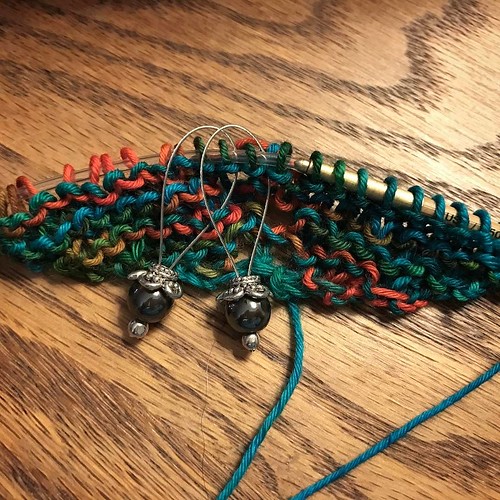The excision of 6PPs was quantified in each and every of G0/G1, S, and G2/M as described formerly [eighteen]. Briefly replicate exponentially-expanding cultures (16106 cells on sixty-mm dishes) were mock-irradiated or irradiated with 15 J/m2 of 254-nm UVC or 300 J/m2 UVB, and harvested both right away or following 6 h incubation at 37uC in typical medium. Cells have been then set, denatured with .2N HCl furthermore .five% Triton X-a hundred, and stained with FITC-conjugated anti-six-4PP antibody (Kamiya, Seattle, WA) and PI. Movement cytometry was employed to analyze the extent of 64PP removal at 6 h post-UV for populations gated in each stage of the mobile cycle. Removal of CPDs as a function of cell cycle was also evaluated using an adaptation of the over protocol based on triple labeling as explained previously [21]. Briefly exponentially-developing cultures have been irradiated with both 10 J/m2 of 254-nm UVC or two hundred J/m2 UVB, followed immediately by incubation with 30 mM BrdU (Sigma-Aldrich, Oakville, Canada) for one h. Monolayers had been then washed completely with PBS and fresh complete medium extra. For the h time-level, BrdU was included thirty min prior to UV irradiation, soon after which cells had been quickly harvested for evaluation. Adhering to additional incubation for either 12 or 24 h cultures had been harvested, set in ethanol, and denatured with 2N HCl in addition .five% Triton X-a hundred. Cells ended up then stained with anti-CPD antibody (Kamiya, Seattle, WA), AlexaFluor647-conjugated antiBrdU antibody and PI, and analyzed by stream cytometry.
Fourteen human melanoma strains from the Wistar collection (WM35, WM1366, WM1341D, WM3248, WM902B, WM3211, WM1158, WM278, WM793B, WM1361A, WM1617, WM3734, WM2664, WM983B), and human main XPA-deficient skin fibroblasts (GM01630), ended up acquired from the Coriell Institute (Camden, NJ). The hTERT-immortalized pores and skin fibroblast traces F02-98 and 1BR, derived from a Seckel syndrome individual and standard personal, respectively, have been kindly provided by Dr. P. Jeggo (University of Sussex) [19]. All culture media and health supplements employed in this examine have been obtained from Invitrogen (Burlington, Canada). The over strains were propagated in Eagle’s MEM that contains fifteen% FBS, important and nonessential amino acids, vitamins, L-glutamine, and antibiotics. Human main melanocytes (strains GM22134, GM21807, and GM22141 Coriell Institute) have been developed in Medium 254 that contains human melanocyte expansion complement.
Exponentially-growing cultures on sixty-mm dishes have been irradiated with  5, ten, or fifteen J/m2 of 254-nm UVC, or mock-irradiated, and instantly trypsinized for17640949 plating of proper mobile figures on one hundred-mm dishes in new medium. Following 21 times incubation, colonies were stained with .5% methylene blue (w/v) in fifty% methanol (v/v). KDR-IN-1 Survival is expressed as a percentage relative to mock-irradiated cells. Mobile monolayers had been washed with PBS and coated with one ml of PBS, adopted by irradiation with both monochromatic nm UVC utilizing a G25T8 germicidal lamp (Philips), or polychromatic UVB (290-320-nm) employing an F15T8 lamp (UVP). The incident UVB was handed through a two-mm thick Schott WG305 filter to vastly attenuate wavelengths below 290-nm, as previously described [20]. The fluences had been .one J/m2/s for 254-nm UVC, and 2.5 J/m2/s for UVB, as measured with a Spectroline DRC 1006 electronic radiometer outfitted with DIX-254 and DIX-three hundred sensors, respectively.
5, ten, or fifteen J/m2 of 254-nm UVC, or mock-irradiated, and instantly trypsinized for17640949 plating of proper mobile figures on one hundred-mm dishes in new medium. Following 21 times incubation, colonies were stained with .5% methylene blue (w/v) in fifty% methanol (v/v). KDR-IN-1 Survival is expressed as a percentage relative to mock-irradiated cells. Mobile monolayers had been washed with PBS and coated with one ml of PBS, adopted by irradiation with both monochromatic nm UVC utilizing a G25T8 germicidal lamp (Philips), or polychromatic UVB (290-320-nm) employing an F15T8 lamp (UVP). The incident UVB was handed through a two-mm thick Schott WG305 filter to vastly attenuate wavelengths below 290-nm, as previously described [20]. The fluences had been .one J/m2/s for 254-nm UVC, and 2.5 J/m2/s for UVB, as measured with a Spectroline DRC 1006 electronic radiometer outfitted with DIX-254 and DIX-three hundred sensors, respectively.